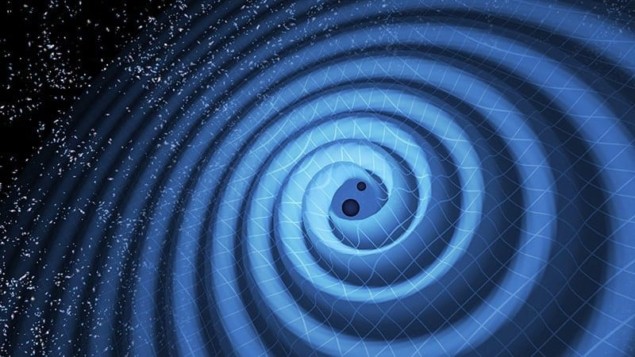
An international team of physicists has created a small interferometer-based motion sensor that could be used to boost the performance of gravitational-wave detectors. The centimetre-sized device can measure the displacement of test masses at sub-picometre precision at low frequencies. The researchers believe that their technical innovations could lead to new opportunities in gravitational wave detection – allowing astronomers to observe events that have so far remained obscured by noise. It could also be used in other fields including seismology and metrology.
The LIGO and Virgo observatories are kilometre-sized interferometers that detect gravitational waves by monitoring the positions of large mirrors, which undergo exceptionally tiny displacements when a gravitational wave passes through Earth. So far, they have picked up dozens of signals of gravitational waves – largely originating from the mergers of pairs of stellar-mass black holes. Based on this initial success, astronomers are now hoping to detect the lower-frequency gravitational waves generated by the mergers of much larger intermediate-mass black holes, which are hundreds, or even thousands, of times the mass of the Sun.
Unfortunately, seismic and other noise currently prevents LIGO and Virgo from reaching the required sensitivity needed to measure these low-frequency signals. The effect of this noise can be controlled to a certain extent by monitoring and damping the motions it causes in the mirrors and other components of the observatories.
Commercial components
Now, Jiri Smetana at the University of Birmingham and colleagues have used commercially available optical components to create a displacement detector that they say is suitable for these noise suppression systems.
The sensor comprises two Michelson interferometers that are driven by a single laser. Each interferometer comprises a sensing head and a mirror. One of the sensing heads is part of a feedback loop that stabilizes the frequency of the laser, thereby boosting the performance of the system.

Quantum squeezing boosts performance of LIGO and Virgo gravitational-wave detectors
The team used a technique called deep frequency modulation to calculate the displacement of the mirrors from the measured interferometer fringes. This technique allows tiny motions across a wide range of frequencies to be detected. Indeed, the system had a sensitivity of 0.3 pm/√Hz at a frequency of 1 Hz and is 300 times better than one type of sensor that is currently used in LIGO.
The sensor is only several centimetres in size, which makes it a suitable candidate for future upgrades to existing gravitational wave detectors – upgrades that could be implemented with minimal impact to their existing infrastructure.
With these improvements in place, the researchers suggest that astronomers may be able to detect mergers between intermediate-mass black holes for the first time. Having the ability to measure lower-frequency signals would also be useful for multimessenger astronomy, allowing signals to be detected further in advance of merger events. The sensor could also find use in other instruments that detect tiny displacements – such as torsion balances and seismometers.
The research is described in Physical Review Applied.



